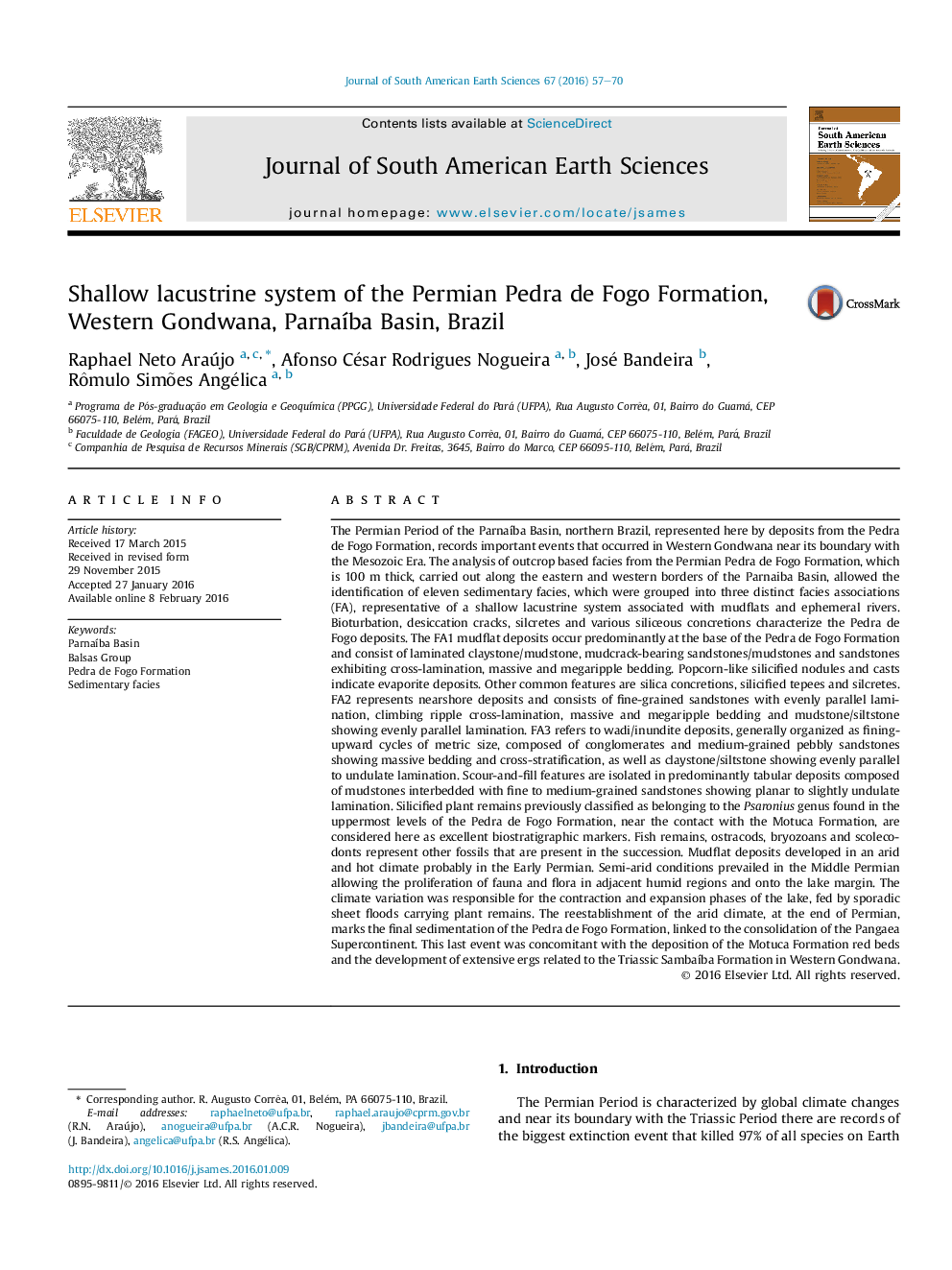| Article ID | Journal | Published Year | Pages | File Type |
|---|---|---|---|---|
| 4682010 | Journal of South American Earth Sciences | 2016 | 14 Pages |
•We analyzed deposits of the Pedra de Fogo Formation, Parnaíba basin, Brazil.•We identified eleven sedimentary facies, grouped into three facies associations.•The unit records a lacustrine system associated with mudflats and ephemeral rivers.•Silicified Permian plant remains occur exclusively in the Pedra de Fogo formation.•The sedimentation and fossiliferous records were influenced by climate changes.
The Permian Period of the Parnaíba Basin, northern Brazil, represented here by deposits from the Pedra de Fogo Formation, records important events that occurred in Western Gondwana near its boundary with the Mesozoic Era. The analysis of outcrop based facies from the Permian Pedra de Fogo Formation, which is 100 m thick, carried out along the eastern and western borders of the Parnaiba Basin, allowed the identification of eleven sedimentary facies, which were grouped into three distinct facies associations (FA), representative of a shallow lacustrine system associated with mudflats and ephemeral rivers. Bioturbation, desiccation cracks, silcretes and various siliceous concretions characterize the Pedra de Fogo deposits. The FA1 mudflat deposits occur predominantly at the base of the Pedra de Fogo Formation and consist of laminated claystone/mudstone, mudcrack-bearing sandstones/mudstones and sandstones exhibiting cross-lamination, massive and megaripple bedding. Popcorn-like silicified nodules and casts indicate evaporite deposits. Other common features are silica concretions, silicified tepees and silcretes. FA2 represents nearshore deposits and consists of fine-grained sandstones with evenly parallel lamination, climbing ripple cross-lamination, massive and megaripple bedding and mudstone/siltstone showing evenly parallel lamination. FA3 refers to wadi/inundite deposits, generally organized as fining-upward cycles of metric size, composed of conglomerates and medium-grained pebbly sandstones showing massive bedding and cross-stratification, as well as claystone/siltstone showing evenly parallel to undulate lamination. Scour-and-fill features are isolated in predominantly tabular deposits composed of mudstones interbedded with fine to medium-grained sandstones showing planar to slightly undulate lamination. Silicified plant remains previously classified as belonging to the Psaronius genus found in the uppermost levels of the Pedra de Fogo Formation, near the contact with the Motuca Formation, are considered here as excellent biostratigraphic markers. Fish remains, ostracods, bryozoans and scolecodonts represent other fossils that are present in the succession. Mudflat deposits developed in an arid and hot climate probably in the Early Permian. Semi-arid conditions prevailed in the Middle Permian allowing the proliferation of fauna and flora in adjacent humid regions and onto the lake margin. The climate variation was responsible for the contraction and expansion phases of the lake, fed by sporadic sheet floods carrying plant remains. The reestablishment of the arid climate, at the end of Permian, marks the final sedimentation of the Pedra de Fogo Formation, linked to the consolidation of the Pangaea Supercontinent. This last event was concomitant with the deposition of the Motuca Formation red beds and the development of extensive ergs related to the Triassic Sambaíba Formation in Western Gondwana.
Graphical abstractFigure optionsDownload full-size imageDownload as PowerPoint slide
